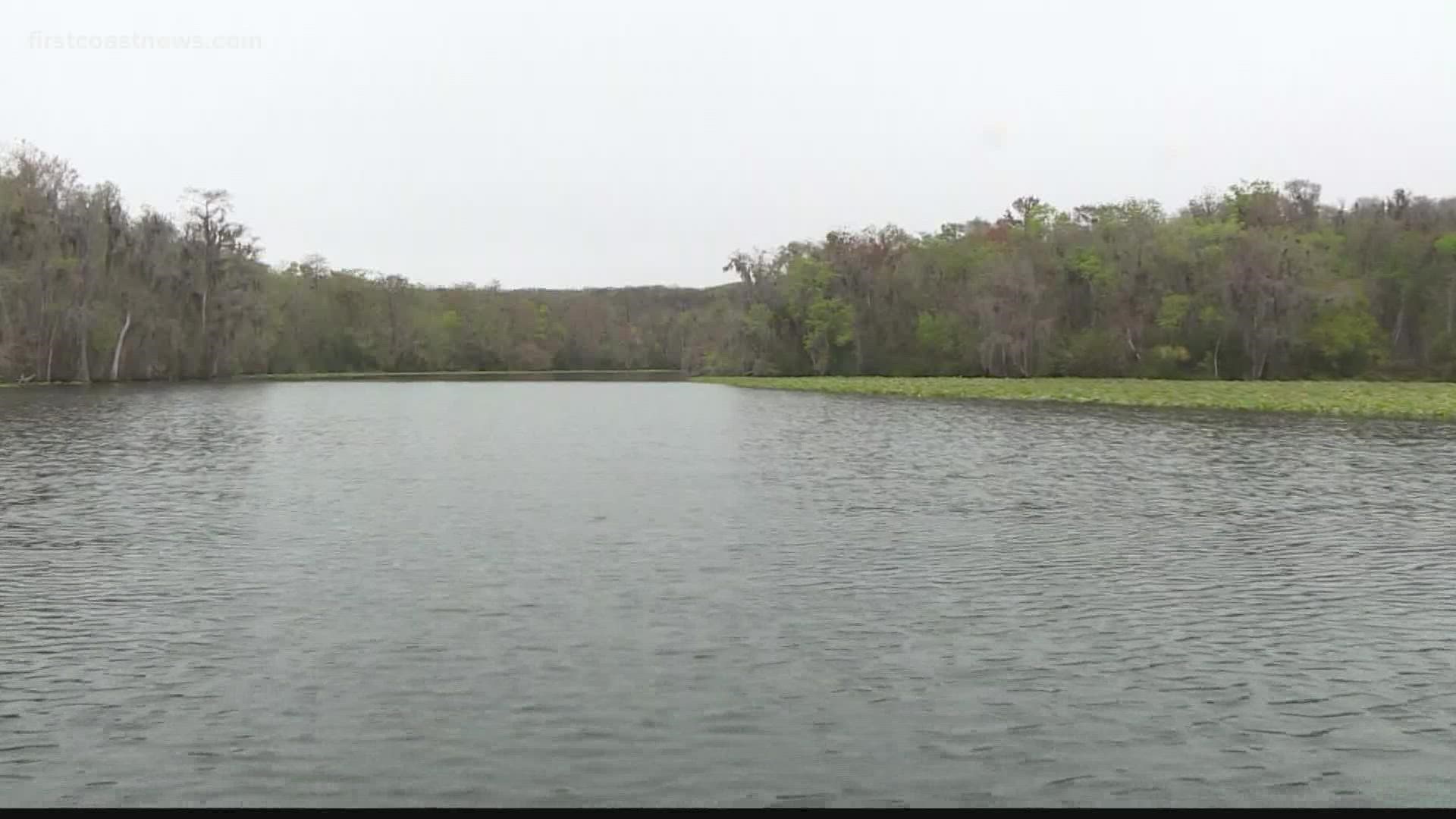PUTNAM COUNTY, Fla. — A dam in Putnam County has impacts on the St. Johns River all the way up to Jacksonville.
St. Johns Riverkeeper Lisa Rinaman was aboard a pontoon boat recently, floating along old Florida.
"So we’re going to go into the Ocklawaha River," she said as the channel narrowed from the St. Johns River.
The Ocklawaha River connects to the St. Johns River 100 miles from where the St. Johns runs into the Atlantic Ocean in Duval County.
"The Ocklawaha is the largest tributary to the St. Johns River," Rinaman noted.
In 1968, the Rodman Dam was created on the Ocklawaha as part of a canal that was supposed to be dredged across the state for barge traffic. While the Cross Florida Barge Canal was never completed, the dam was and still operates.
The St. Johns Riverkeeper, along with the Free the Ocklawaha group, and dozens of others are joining forces, hoping to finally convince state lawmakers to unplug the dam. The goal is to have the Ocklawaha River freely flow again, connecting Silver Springs to the St. Johns River.
"This restoration project will revitalize and restore the St. Johns River estuary from Welaka to Palatka to Jacksonville," Rinaman said.
She said the fresh water from Silver Springs, as well as from 20 other springs near or under the Ocklawaha, would result in fewer algae blooms and healthier salinity levels for the St. Johns River.
The proposed plan to unplug the dam would not actually remove the manmade structure. The plan would create a cut-through in the berm next to the dam. It's where the river's natural channel was originally.
Water from the reservoir would then be directed to flow freely through that cut-through along the river's more natural path.
But just as there is one side to this story that wants to see the Ocklawaha River restored and the dam stop working, there is another side called Save the Rodman Reservoir.
That side wants the dam to remain because the 9,600 acre reservoir the dam created has become a fantastic fishing location. It lures bigtime sport fisherman from around the country as well as the less wealthy men and women who literally fish for their dinner.
"It has such a good flow to it. No pollution. The clarity is unbelievable," Mike Huff told First Coast News.
Huff is a fishing guide all across Florida. Known as the Crappie Whisperer, he's fished in central Florida since 1972 and frequents the Rodman Reservoir.
"The dam has created such a unique area for fish to congregate at," Huff said. "You’ll never find that again where you can have 150 – 200 people enjoying themselves and everybody catch fish."
However, Rinaman said the "lake" was not naturally formed and has to be drained every few years in order to maintain it, which she said, disrupts the environment downstream.
Both sides of the dam argument say their goals -- to either keep the dam in place or to have it intentionally breached to restore the river -- will be good for manatees, for water quality and for the economy.
Both sides are waiting for the Florida Department of Environmental Protection to release a report about the dam's structural integrity.
So this is a story about two sides of an issue that both enjoy and value the environment, but are coming at preserving it from different directions. One side want to protect an environment that’s evolved in the last five decades. The other wants to return the area to its natural state that it hasn't seen for more than 50 years.

